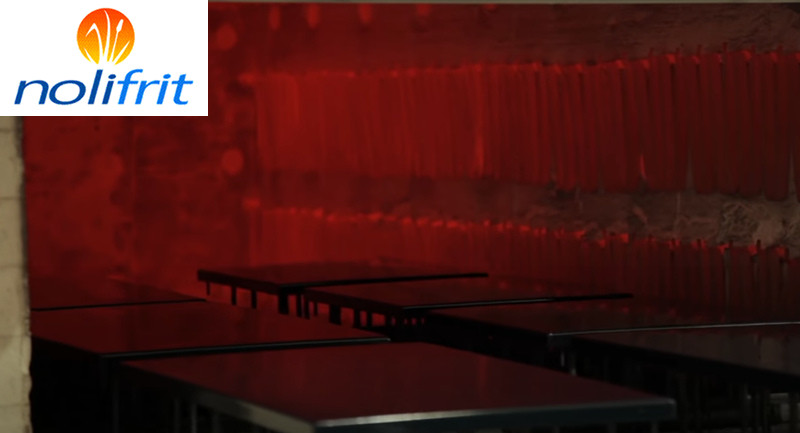Notes For The Firing of Porcelain Enamel Products
The dried powder coated body enters the firing furnace, and then the dry powder layer is melted under the established enamel firing process conditions, the ground coat is adhered to the metal billet, and the cover coat is combined with the ground coat layer to produce opalescence, luster and color, and achieve the application. For some physical and chemical properties, this process is called firing.

Firing is one of the most critical processes in the production of enamel products. It plays a very important role in the appearance and internal quality of the product. The quality of the previous processes will be reflected after firing. By analyzing the defects of the enamel products after firing, it is helpful to find the problems in the previous processes, so as to improve and further increase the qualification rate of the enamel products.
The enamel firing stage includes the product entering the furnace for firing and exiting the furnace for cooling. The elements of the process parameters at this stage include three aspects: reasonable firing system, uniform heating and uniform cooling.
1. Reasonable firing system
The key conditions for the firing of enamel products are the temperature, time and indoor atmosphere during firing. Each kind of enamel has a certain range of melting and softening temperature, and the firing temperature must be determined within this range; in most cases, enamel products must be fired in an oxidizing atmosphere; firing time is related to the types of enamel frit used and the shape, size, and structure of enamel products.
During the firing process of enamel products, heat is transferred from the surface of the product to the interior, so that the internal temperature is consistent with the surface temperature, so that all the firing can be completed, which requires a certain firing time. In order to ensure high-quality products, a complete set of firing systems from ground coat to cover coat should be established.
2. Heat evenly
When firing, the heating of all parts of the enamel product is basically the same, which is called uniform heating. Due to the different positions in the furnace during the shape and firing of the iron billet, there may be temperature differences in various parts of the same dry powder billet. In order to reduce the uneven degree of heating of the products, attention should be paid to the height of the hanging basket and the burning rack, the arrangement of the positions of the products in the furnace, the mutual distance between the products, and the mass ratio of the products to the hanging basket and the burning rack.
The heat transfer in the firing furnace can be divided into three methods: radiation, convection, and conduction. The firing of enamel products is mainly based on radiation heat transfer. In the furnace, the edge of the product is closest to the heating element and receives the most heat. Most of the bottom of the billet is thicker than other parts, and most of the burning frame is at the bottom, which absorbs more heat, so the bottom of the enamel product is less heated than other parts. In order to make the products evenly heated, the edges should be kept at a certain distance from the heating element as much as possible, and the products should also be kept at a certain distance and not obstruct each other, and the quality of the burning rack and hanging basket should be reduced as much as possible.
The enamel products near the door of the intermittent furnace (commonly known as earthen furnace) should be properly placed inside to avoid the low temperature at the door of the furnace causing the product to be burnt inside and outside.
3. Uniform cooling
After the enamel product is fired, it is in a hot state when it is out of the furnace. During the cooling process, due to the inconsistent shrinkage of the iron billet and the enamel layer, internal stress is generated in the product. When the internal stress exceeds the tensile or compressive strength of the enamel layer, it will cause defects such as cracks or peeling of the porcelain layer, especially at the edges and corners of the product, because the radius of curvature is small, the stress is concentrated, and the peeling is most likely to occur. . If the part of the product dissipates unevenly, causing excessive concentration of internal stress in the part, the above-mentioned defects are more likely to occur.